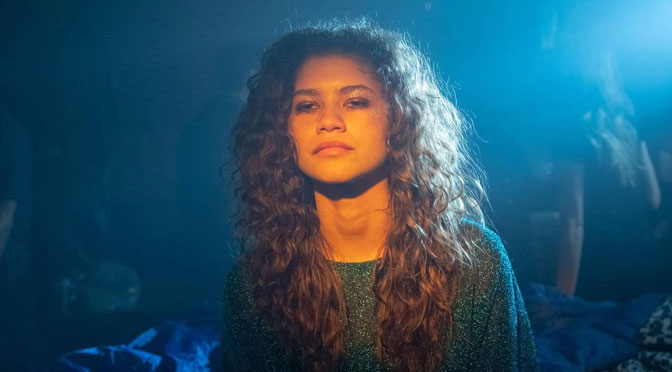HBO’s “Euphoria” has been causing quite a stir since its release in 2019, mostly in regards to its raw and realistic portrayal of high school life and the issues that teens face. From addiction to mental health struggles, the show does not shy away from exploring the darker side of adolescence, which has led to mixed reactions from viewers. While some have praised the show’s unapologetic approach to depicting youth culture, others have criticized its seemingly glorification of drug use and graphic scenes of violence and sex. In this blog post, we’ll delve deeper into the reactions to “Euphoria” and examine the picture it paints of today’s youth.
One of the main criticisms of “Euphoria” has been its depiction of drug use. The show has been accused of glamorizing drug addiction and promoting risky behaviors to a vulnerable audience. However, the show’s creator, Sam Levinson, has defended the portrayal of drugs in Euphoria, arguing that it is not meant to be a moralistic tale, but rather a reflection of reality.
On the other hand, many viewers, especially younger ones, have praised “Euphoria” for its frank approach to depicting youth culture. They have argued that the show accurately captures the struggles and the pressures faced by today’s young people and that it helps to start important conversations about issues such as mental health and addiction.
In addition to its portrayal of drug use, “Euphoria” has also been criticized for its explicit sexual content. The show has been called gratuitous and voyeuristic, with some viewers accusing it of being created solely for shock value. However, others have argued that the show’s sexual content is integral to its message and that it should not be censored or watered down.
“Euphoria” takes a groundbreaking look at sexuality among teens. Most shows treat the topic as something taboo, but Euphoria embraces sexuality as a natural part of human development.
The show depicts teens exploring their identities and finding connection in intimate relationships. Rather than judge or shame, it presents relationships and encounters with empathy, care and nuance. Viewers see that behind every sexual act are real people with hopes, struggles and humanity.
Sex scenes focus not just on physical acts, but on communication, consent and the emotional experience of characters. Their sexuality exists in the context of seeking pleasure, love and self-understanding. This creates humor, drama and heart in equal measure.
By treating teen sexuality with compassion instead of fear, “Euphoria” starts important conversations. It acknowledges that exploring one’s sexuality is how many come to know themselves. For showing such experiences don’t have to be only about danger or exploitation, “Euphoria” brings audiences an honest look at what it’s like to grow up in today’s world.
The success of Euphoria shows there is a deep well of interest in authentic portrayals of adolescent sexuality and relationships. Young readers are hungry to see their experiences reflected in literature without stigma or shame.
As an author, “Euphoria” encourages me to address topics mainstream publishers have shied away from. Teens face pressures around sexuality that past generations did not. They deserve books that tackle these issues genuinely, from a place of empathy rather than fear.
The taboos of old no longer apply. Readers want material that engages them both intellectually and viscerally. “Euphoria” proves there is an audience for work that explores sexuality as joyous discovery, not just danger or disease. It gives me hope that publishers may look past outdated mores to works embracing adolescence as a phase of blossoming, not just ‘purity’.
No subject should be off limits in fiction, so long as it’s handled with care, maturity and truthful respect for the adolescent experience. For authors willing to go there, Euphoria shows the way is open.


